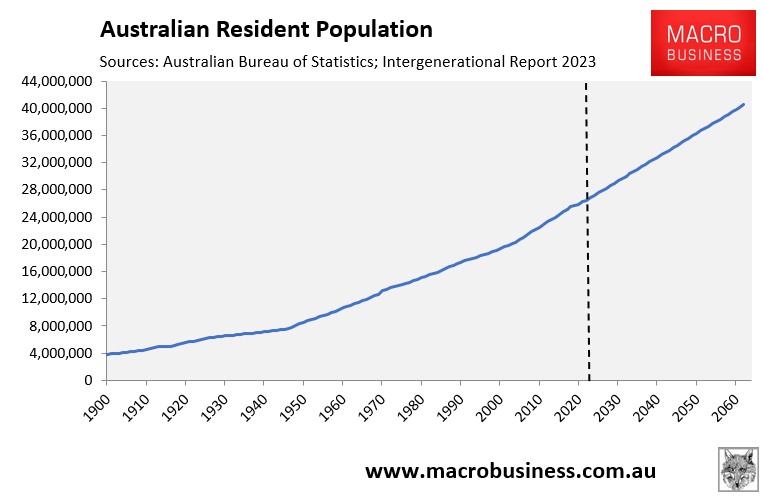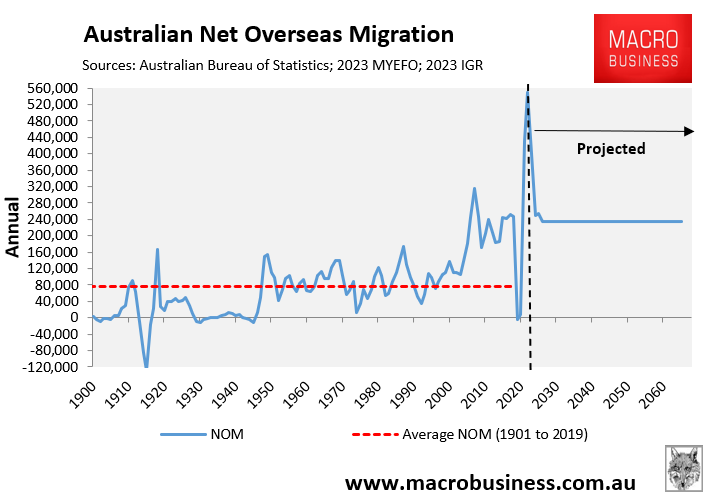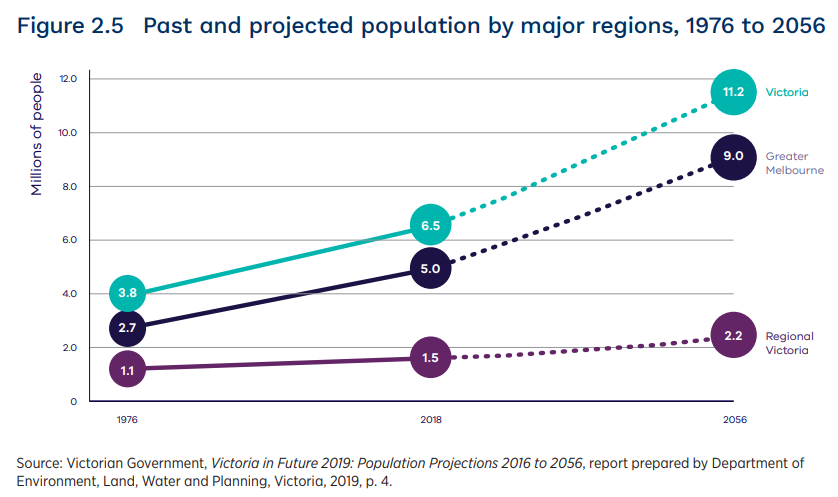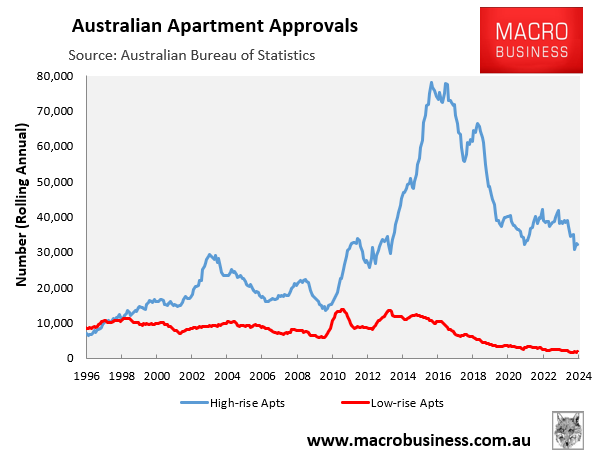The latest Intergenerational Report projected that Australia’s population would balloon by another 13.5 million people over the next 39 years to 40.5 million people by 2062-63:

This ballooning population would be driven purely by permanently high net overseas migration:

Melbourne is forecast to receive the largest share of this population increase, with the state government projecting that the city’s population will reach 9.0 million people by 2056, up from 5.0 million in 2018:

This population explosion will necessarily be accompanied with future residents being forced to live in high-rise apartments, since that is the only way of squeezing millions of extra residents into the existing urban footprint.
The sheer volume of migrants that will be added in such a short period of time will also necessarily require high-rise towers to be built quickly, resulting in compromised quality and defects.
The high-rise apartment construction boom experienced in the latter half of last decade is a harbinger of what is to come if politicians persist with the ‘Big Australia’ migration policy.

The Sunday Age reported that up to 60% of new apartments in Australia are plagued with construction flaws, including cracked foundations, water leaks, balcony defects, and flammable cladding.
Australian Apartment Advocacy has warned that poor workmanship in apartments has led to special levies and bills totaling thousands of dollars for repairs or urgent maintenance after purchasing apartments.
Experts say in some cases, owners cannot afford these levies or urgent maintenance costs, forcing them to sell for a fraction of their purchase price. Many defects are uncovered when people get combustible cladding removed.
New state government figures show that about 90 buildings in Victoria deemed extreme or high-risk still have their dangerous combustible cladding, five years after the government promised to make the buildings safe via a $600 million fix.
Builders Collective of Australia president Phil Dwyer warns that the $600 million the government has set aside is not enough to tackle the cladding crisis.
“They have to borrow money and then banks don’t want to know about it because they’ve already got a mortgage, and they can’t sell the property”, Dwyer said.
“The government has failed, and the system has failed these people completely”.
“It is really a very difficult situation, a shocking situation. It has created a minefield for consumers”.
Our politicians have created an absurd situation.
They run an absurdly high immigration program that requires high-rise apartments to be built quickly to meet demand.
Developers cut corners, resulting in poor quality apartment complexes that are riddled with defects, which end up costing consumers and taxpayers a small fortune to rectify.
What makes anybody believe that the situation will change if Australia’s population balloons by 13.5 million people—equivalent to adding another Sydney, Melbourne and Brisbane to the current population—in only 39 years, as projected by the Intergenerational Report?
There is simply no way that Australia can build enough high quality housing and infrastructure to meet such a population increase.
The first best solution is to slash net overseas migration to a level that is below the nation’s capacity to build homes and infrastructure. This way, the construction industry can focus on quality over quantity.
Otherwise, we will continue to make the same mistakes and Australia’s housing system will continue to fail.

